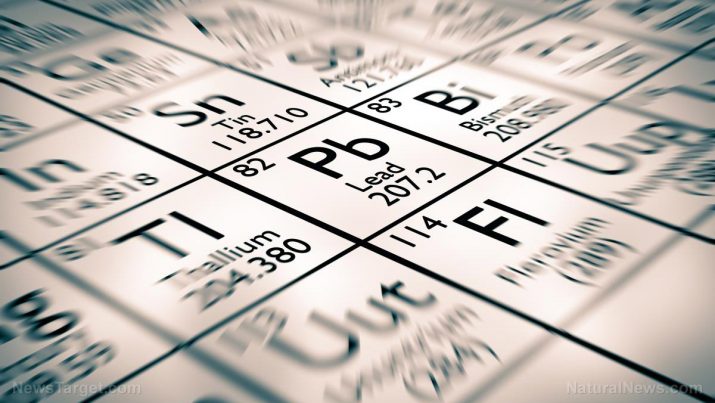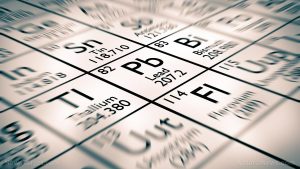
Lead – toxicity, side effects, diseases and environmental impacts
Wednesday, November 29, 2017 by Janine Acero
http://www.naturalpedia.com/lead-toxicity-side-effects-diseases-and-environmental-impacts.html

Lead is a heavy, ductile, soft, highly lustrous bluish-white or gray element. One of its first uses (dating back to ancient times) was in the construction of water pipes, where it got its molecular formula “Pb”, from the Latin word plumbum, meaning “waterworks”.
Lead has since then been widely used in so many products, including cosmetics, paint, solder, pipes and gasoline, before people realized its potent toxicity. It continues to pose a real public health danger today.
Lead is commonly mined and smelted in Missouri, Idaho, Utah, Colorado, Montana and Texas.

List of side effects
Lead is a corrosive and toxic substance. It can irritate the skin and eyes, and is harmful if swallowed and inhaled. Moreover, lead poisoning can damage fertility and the unborn child and can likewise affect breastfed children. Repeated or prolonged exposure to moderate and high levels can also damage certain organs and cause a plethora of adverse side effects including:
- Abdominal tenderness
- Anemia
- Anxiety
- Disturbance of the gastrointestinal tract (includes constipation, anorexia and colic)
- Facial pallor
- Forgetfulness and/or poor concentration
- Glomerular sclerosis
- Hypotension
- Insomnia
- Interstitial fibrosis
- Irreversible vascular sclerosis
- Lassitude (weakness and exhaustion)
- Motor weakness (which may lead to paralysis of wrists and ankles)
- Pallor of the eye grounds
- Tubular cell atrophy
- Weight loss and/or malnutrition
Experimental tests on fowl (geese, Mallard ducks) poisoned with lead shots showed the following side effects:
- Microscopic degenerative lesions in the myocardium
- Distended gallbladder
- Flabby hemorrhagic heart
- Discolored friable liver
- Enteritis (inflammation of the intestines)
- Destruction of proventricular epithelium
- Bone medullary osteocytes and pectoral muscle cells
In addition, lead is highly toxic to aquatic organisms, with long-term effects. The United States Environmental Protection Agency (EPA) categorized lead as a probable human carcinogen, as per the online chemistry database PubChem.
Body systems affected by lead
Lead exposure affects the eyes, gastrointestinal tract, central nervous system, haematopoietic system (blood) liver, kidneys and gingival tissue. Upon inhalation, absorption takes place easily from the respiratory tract and symptoms develop relatively quickly as compared to oral ingestion.
Items that can contain lead
Lead can be found in a wide range of products, including paint, painted toys, furniture and toy jewelry, certain imported products such as some traditional medicines, ceramics, pipes and plumbing materials, solders, gasoline, batteries, ammunition, food or liquid containers, and cosmetics.
Children living in older homes can still breathe in or ingest dust or paint chips from peeling lead paint on the walls. Lead can also leach into the drinking water supply through older, corroded lead pipes, faucets and solder.
Lead poisoning in adults is usually occupational or hobbies related due to inhalation of lead containing dust, fumes or vapors. Poisoning often occurs with no obvious symptoms and frequently goes unrecognized.
How to avoid lead
Certain vocations such as roofing, battery manufacture, pottery production, smelting, bronzing, pipe cutting, soldering and roofing can expose adults and their families to lead. Here are some safety measures you can take to protect your family from lead poisoning:
- Have local health departments test the paint and dust in houses to detect lead.
- Keep children away from peeling paint as much as possible.
- Avoid medicines and cosmetics that may contain lead.
- Remove shoes before entering the house.
- Wear protective clothing before leaving the work site.
- Do not eat or drink in any area contaminated with lead dust.
Summary
Lead is a poisonous chemical found in a wide range of products, including paint, water pipes, children’s toys and cosmetics.
Lead poisoning usually occurs without noticeable symptoms, but repeated or prolonged exposure may cause a plethora of adverse health effects.
Sources include:
Tagged Under: Tags: Lead





